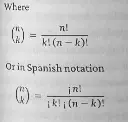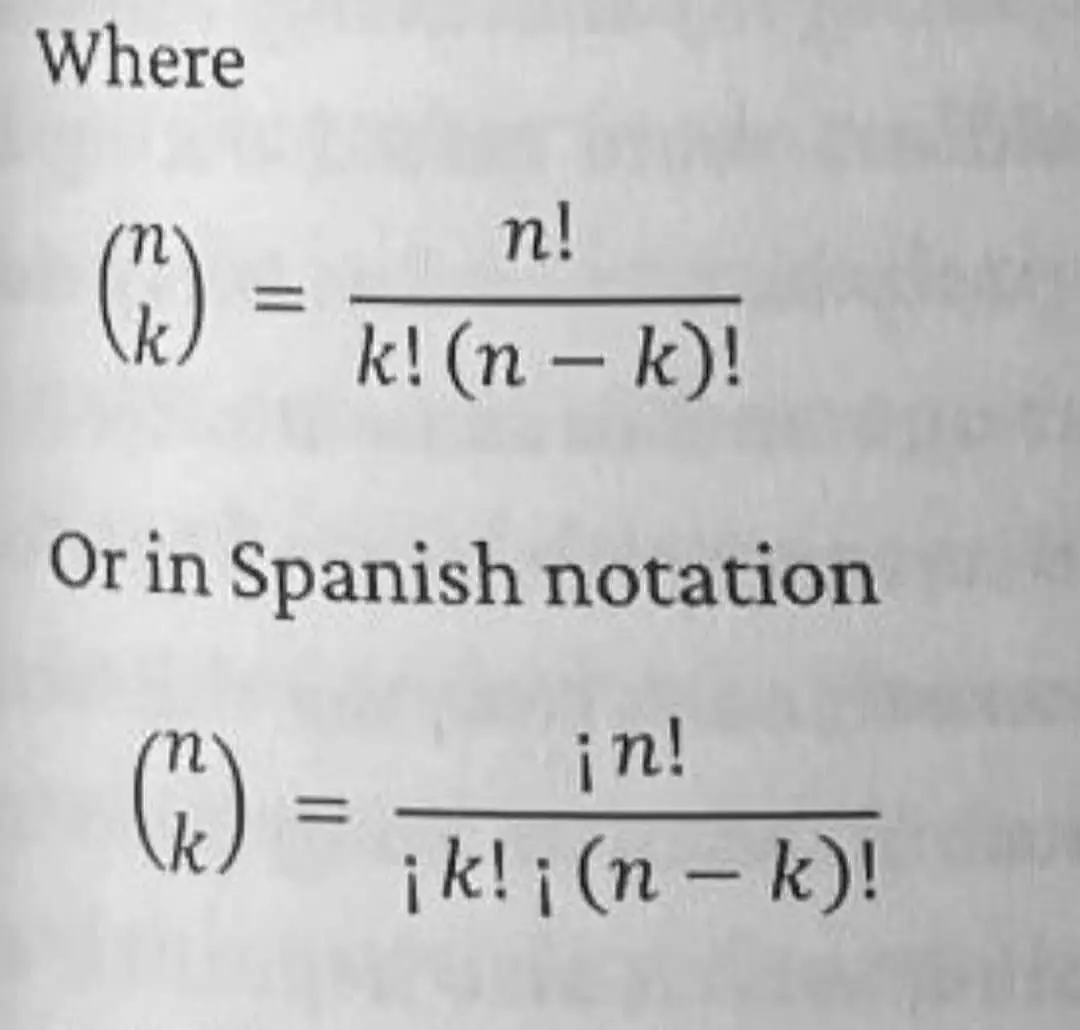23 comments
You don't need brackets in the Spanish notation. ¡{That's the whole point}!
30 0 ReplyWhyd you use curly brackets then?
4 0 ReplyBecause they become invisible in LaTeX
1 0 Reply¿{Did I thought}?
5 0 Reply
Spanish mathematician! Is this for real?
4 0 ReplyNo.
3 0 Reply
2 0 Reply¡Nobody expects the Spanish notation!
96 0 ReplyThe Spanish notation makes the parentheses around n-k obsolete, clearly saving one symbol in some formulas is worth introducing a new one in others.
36 0 ReplyWhy not both?
n! / k! ¡n-k!5 0 Reply
Fuck I thought that was an absolute factorial.
44 0 ReplyAren’t all factorials absolute factorials?
6 0 ReplyIt's the same calculation but you also take a shot of vodka for all integers less than n but greater than 0
6 0 ReplyIntroducing, the signed factorial: ¡n! = n × -(n-1) × (n-2) x -(n-3) x ... x (-1)^(n-2)(2) ×(-1)^(n-1)(1)
11 0 Reply
jajaja
16 0 ReplyKinky
7 0 ReplyGoddamnit.
1 0 Reply
23 comments
Scroll to top

